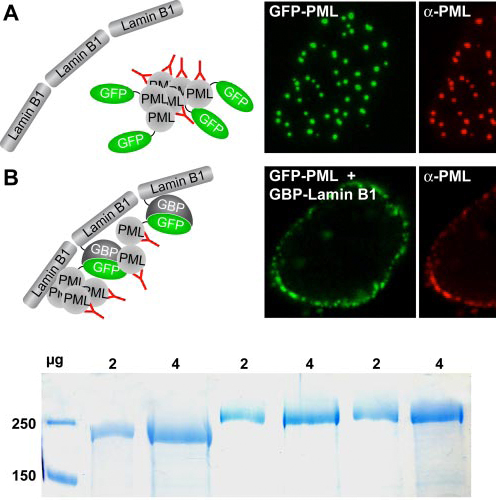A Versatile Nanotrap for Biochemical and Functional Studies with Fluorescent Fusion Proteins
21-Oct-2007
Green fluorescent proteins (GFPs) and variants thereof are widely used to study protein localization and dynamics. We engineered a specific binder for fluorescent proteins based on a 13-kDa GFP binding fragment derived from a llama single chain antibody. This GFP-binding protein (GBP) can easily be produced in bacteria and coupled to a monovalent matrix. The GBP allows a fast and efficient (one-step) isolation of GFP fusion proteins and their interacting factors for biochemical analyses including mass spectroscopy and enzyme activity measurements. Moreover GBP is also suitable for chromatin immunoprecipitations from cells expressing fluorescent DNA-binding proteins. Most importantly, GBP can be fused with cellular proteins to ectopically recruit GFP fusion proteins allowing targeted manipulation of cellular structures and processes in living cells. Because of the high affinity capture of GFP fusion proteins in vitro and in vivo and a size in the lower nanometer range we refer to the immobilized GFP-binding protein as GFP-nanotrap. This versatile GFP-nanotrap enables a unique combination of microscopic, biochemical, and functional analyses with one and the same protein.











